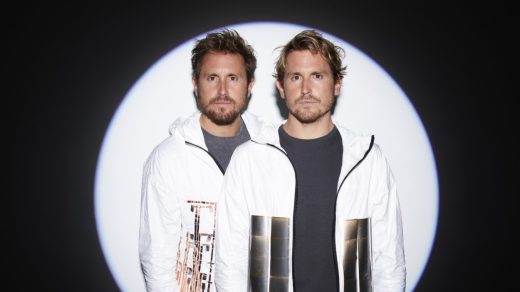Inside Vollebak’s outlandish, death-defying, Mars-exploring clothes built to survive the apocalypse
The neon-yellow hooded jacket that Vollebak cofounder and creative director Nick Tidball is showing me is made from a material called Dyneema, which his activewear company has claimed is the strongest material in the world. Tidball is not a salesman—that’s his identical twin brother, Steve, who’s Vollebak’s CEO. Nick takes pains to let me know he’s a straight shooter. “I don’t really pitch,” he says. “I just help people out.”
According to Vollebak, you could jump off a cliff wearing the $795 Dyneema jacket and it would remain intact. (Your personal experience may vary.) If you fell off a motorcycle speeding at 75 miles an hour wearing the jacket, it would not get scuffed. (Because humans are not made of Dyneema, you may not remain unscuffed.) In fact, a Dyneema jacket can withstand blunt-force trauma—another test that the company ran—so while you’d likely be severely injured, at best, your Vollebak jacket will live on, able to be passed down to the next generation of thrill seekers.
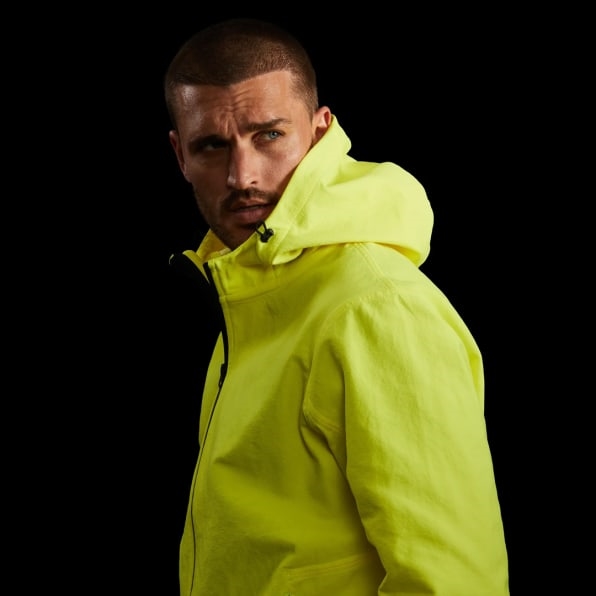
The 8-year-old company—which raised $10 million in a Series A funding round in 2021 from London venture firm Venrex and private investors—has received breathless coverage for its big swings: a $695 hoodie made of mattress material intended to be worn on Mars because it’s ultra-comfortable; an “invisible” coat that infrared red lights can’t detect; a hackable jacket that might one day be able to conduct electric current because of the material it’s made of.
Ultimately, the clothing is an advertising, rather than a technological, marvel. Whether the clothes ever actually make it to Mars is almost beside the point. The Tidballs are selling an idea and marketing it to rich boys who want expensive toys. Their pitch is irresistible (to investors, too), telling them that they’re big thinkers with ideas that might even alter the course of human history.
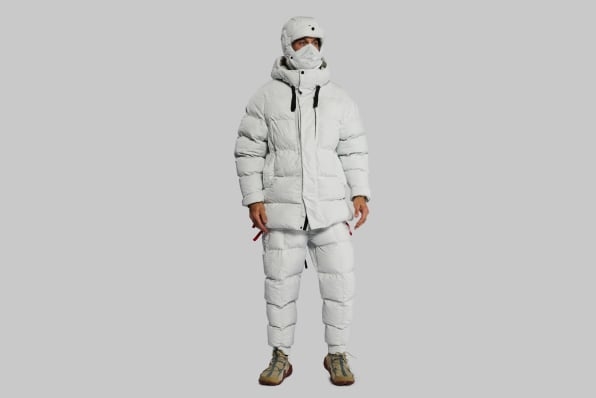
Selling a dream
The Tidball twins—bronzed, British, and compact, wearing Vollebak’s ultra-stretchy ocean shorts ($245) and dusty hiking boots that look incongruous against the wooden floors of Chelsea’s Soho House where they are showcasing their inventions—actually started out in advertising. Nick, who describes himself as “someone who thinks about things closer to now,” and Steve as “a thinker in long-term ways,” studied architecture and art history, respectively, but they cut their teeth in the London offices of ad agency TBWA, creating stunts for blue-chip clients. A house that would float along the Thames to promote Airbnb? No problem. A “real life video game” experience for Adidas. Why not?
They have brought that same flair to Vollebak. Case in point: To unveil the brand’s new logo last March, they released a billboard made from 11 aluminum fragments interlocked using an ancient and time-intensive Japanese stitching method. The billboards, which were then sold (price available on inquiry), were built for—what else?—life on Mars. The Tidballs committed to the bit: The billboard came with a custom protective flight case that likely will not be used for its intended purpose anytime soon.
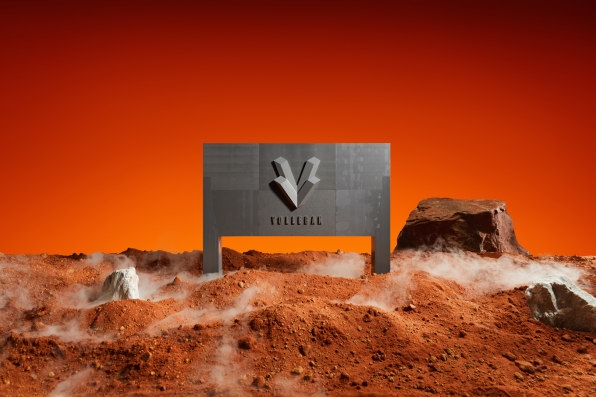
The cofounders have not shied away from publicity themselves. Over the years they have participated in increasingly absurd photos together, posing with a python and tarantula, jumping in front of some random scrap metal, and mean mugging in pink pastel hoodies designed to help professional athletes de-stress (hoods up, obscuring their distinctive sandy blond-red hair).
As Nick tells it, the brothers weren’t especially close and didn’t get along growing up. While working in advertising (which they had decided to do after watching a TV show about creatives), the two wanted something more. “We were jealous. We wanted to do what Apple cofounder Steve Jobs or Nike cofounder Phil Knight had done and actually create something,” Nick says, adding ambiguously: “That’s how we invented it all backwards.”
Their parents were terrified. Neither twin has a technical background in product design. But both enjoyed extreme sports—ultramarathons in exotic locations, trekking through the desert—and set out to create the garments they would want for themselves by finding researchers to collaborate with.
Asked how Vollebak compares with Pangaia—a materials-science/clothing company that has made a name for itself by pushing the limits of textile innovation—Nick says that the Tidballs are taking things further. “Our design and ideation process is entirely maverick, he says. “My biggest fear is everyone at the company becoming sensible.”
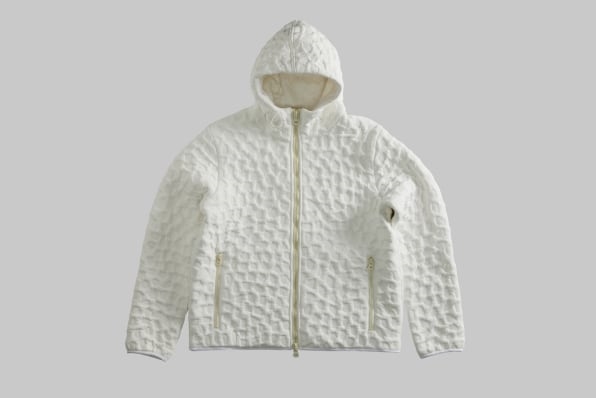
Pricey Prototypes
Many of Vollebak’s designs aren’t totally new. That Dyneema jacket? It’s made from the same material used to produce sails. The 3D-knit Mars hoodie described on the company’s website as “chill-out gear for Mars that’s designed to help you feel at home, even if you’re 249 million miles away,” is literally made from mattress material. The Full Metal Jacket ($1,295) is made from copper, which has antimicrobial properties. Though it was named one of Time magazine’s best inventions in 2020, it’s not clear how the jacket could protect wearers from illness as their hands and head would not be covered. Minor details!
There are also some less-preposterous inventions, like T-shirts intended to last for 100 years, and ultra-warm and protective coats, making Vollebak a sort of futuristic Arc’teryx. A lot of Vollebak’s clothing is manufactured by Schoeller, a Swiss fabric mill that specializes in the development of cutting-edge textile technologies.
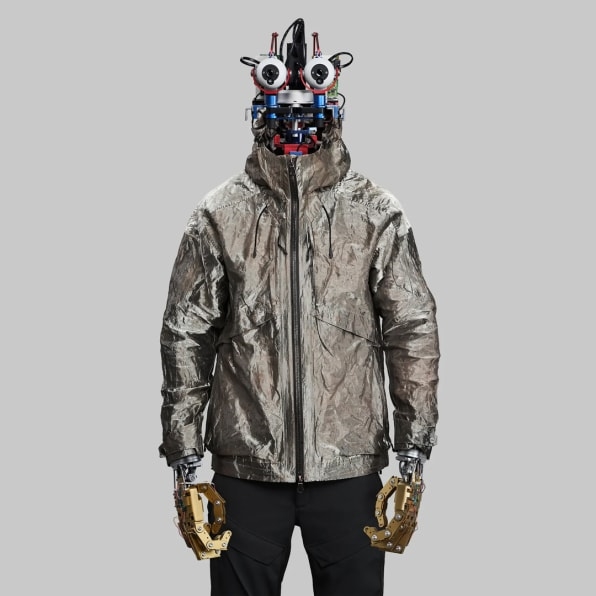
The brand’s bravura marketing has helped it attract customers like director Christopher Nolan, who, when you think about it, is the perfect Vollebak ambassador. Nolan’s films and Vollebak’s apparel share a measure of inscrutability. The premise, whether it’s a sci-fi about time travel or a jacket that is invisible to infrared cameras, makes a lot of sense until you squint a bit and see the plot holes.
The Tidballs, though, argue that we just need time to get there. “You know, we might be 30 or 50 years away from being able to conduct current through a jacket,” Nick says, “but you sort of have to start somewhere.”
Nick makes a big show of checking with Steve whether he can share that Airbnb cofounder Joe Gebbia and Headspace CFO Sean Brecker are investors, even though both names are featured prominently as investors on Crunchbase, other pieces about Vollebak, and on their Wikipedia page. He seems to want me to understand: He’s the fun one! Steve is the real businessman; Nick just comes up with crazy ideas. That Nick references Elon Musk several times—everything from the pricing of the Tesla Cybertruck to how Musk’s adventures in space have inspired him—is no surprise.
To expand, the company hired managing director Toby Bateman earlier this year. Bateman has experience scaling businesses in the fashion realm: He cofounded upscale menswear site Mr. Porter and ran Hodinkee, the luxury watch content and commerce business. “Toby’s our Eric Schmidt,” Nick explains, comparing himself and his cofounder to the legendary founders of Google who turned to Schmidt to help grow their business. Nick later describes his role as akin to legendary Apple designer Jony Ive, and his brother’s as Steve Jobs. In this analogy then, Bateman is “double Steve Jobs.”
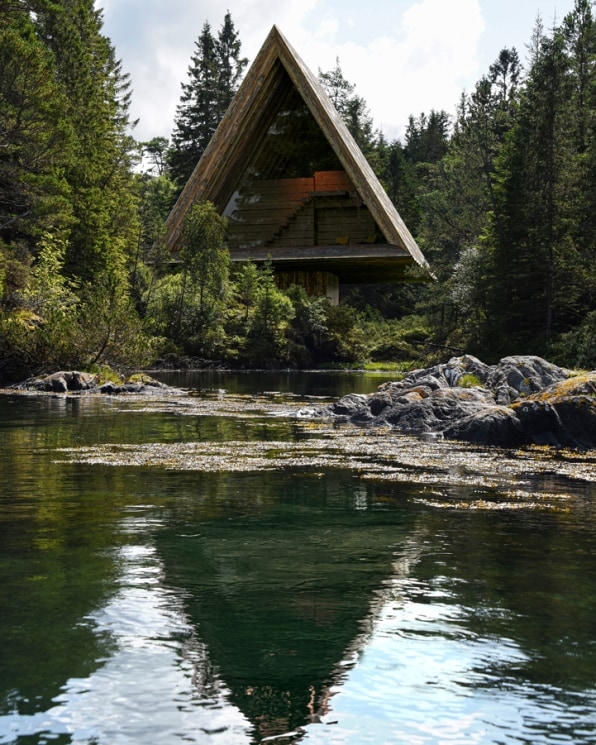
Vollebak Island
Another Vollebak fanboy is starchitect Bjarke Ingels, the man behind Google’s Bay View campus unveiled last year and who in 2017 proclaimed that he was already designing a Martian city. He’s now behind Vollebak’s biggest gambit yet: Vollebak Island. After purchasing an island off Canada’s Nova Scotia, Vollebak worked with Bjarke Ingels Group to design a carbon-neutral, off-grid compound made up of nine interconnected buildings that “rise from the ground, resembling land-art,” according to Vollebak’s website.
But there’s the rub: The plans, which incorporate a bunker-like annex built using cross-laminated timbers, are just plans. That cross-lamination technique alone is relatively new and unproven.

The move recalls Tom Sawyer persuading boys in his neighborhood to finish whitewashing the fence for him. The cost of building the compound, which would be made from hatch, fire-retardant hempcrete, and glass bricks, has not been estimated. The buyer, who will have paid between $3 million and $8 million for the land and plans alone, will have to figure it out.
But true to Vollebak’s name—a Flemish cycling term for “going all out”—the twins are not holding back on hyperbole. “Vollebak Island is the first proof of concept to show how this can eventually be scaled to cities or countries—or even eventually the entire planet,” Nick says.
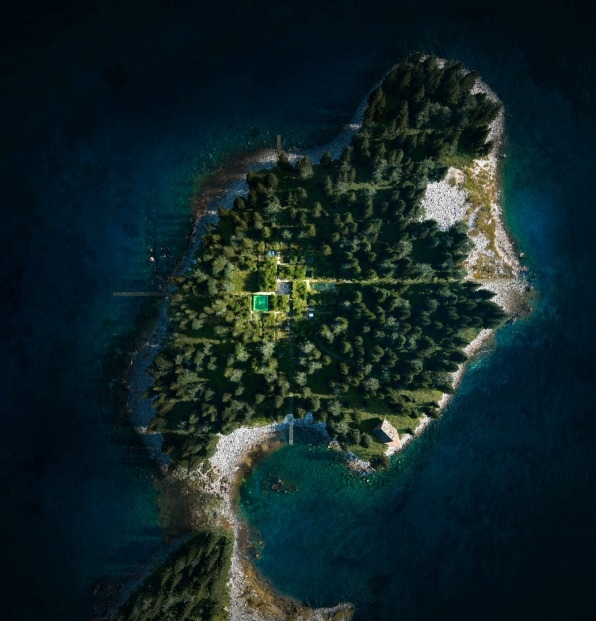
Vollebak Island is the ultimate expression—for now, at least—of the Tidball brothers’ ethos. They’ve built a company that makes clothes for worlds that don’t exist, and now they’ve created an entire fictional island compound. If Vollebak Island ever gets built, the compound will come complete with a bunker where all of Vollebak’s flame-retardant, ultra-relaxing, electricity-conducting clothing can be stored, ready for a billionaire to survive the end of the world in style.
(19)

